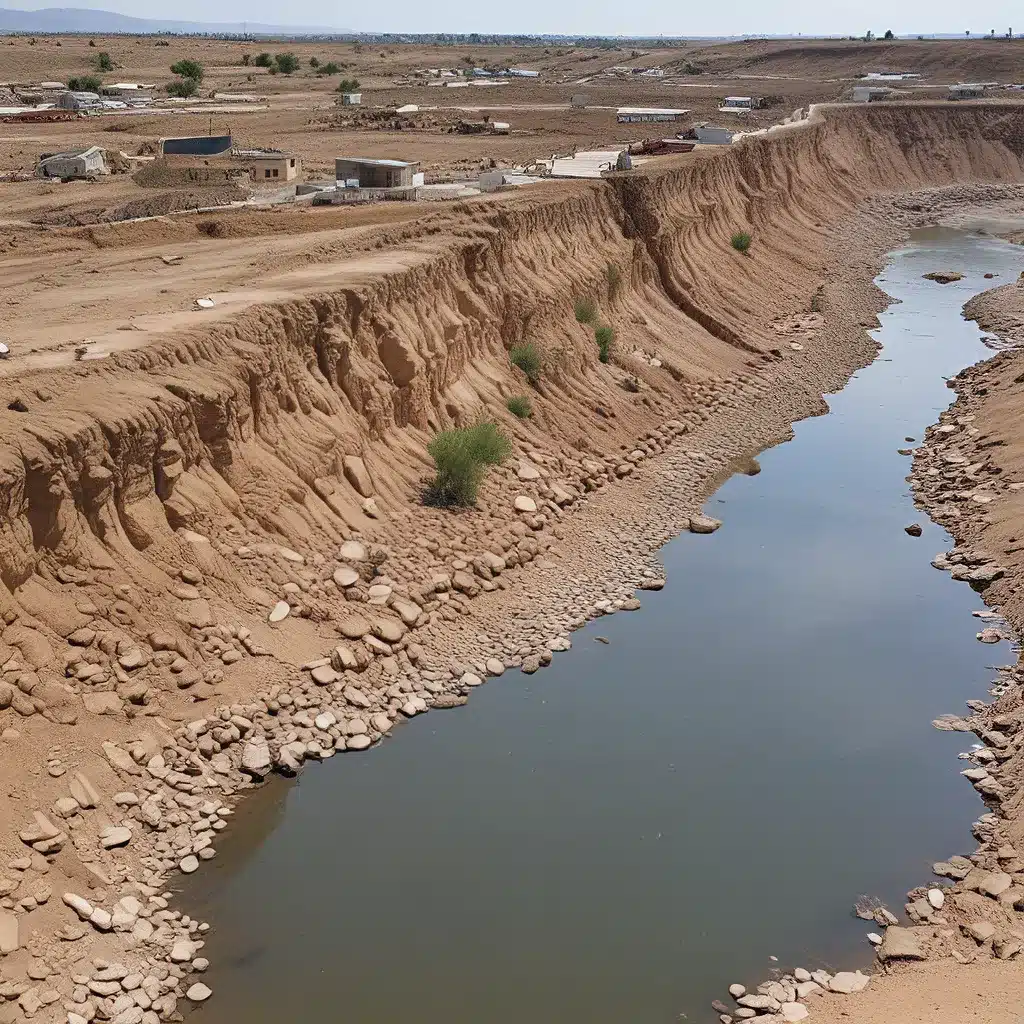
Weathering the Storm: Preparing for Water Emergencies
As I sit here, gazing out at the swirling currents of the river outside my office, I can’t help but wonder: Are we truly prepared for the water emergencies of the future? Climate change has already begun to disrupt the delicate balance of our water resources, and the challenges we face are only going to intensify.
Recent reports have painted a sobering picture of the water crisis looming on the horizon. Rising temperatures, shifting precipitation patterns, and the increasing frequency of extreme weather events are all putting a tremendous strain on our water infrastructure. And let’s not forget about the ever-present threat of natural disasters, from earthquakes to wildfires, that can wreak havoc on our water systems.
But you know, as the old saying goes, “Necessity is the mother of invention.” And in the face of these daunting challenges, I believe we have an opportunity to become more resilient than ever before. It’s time to roll up our sleeves and get to work on implementing effective emergency water strategies that can help us weather any storm.
Diving into the Details: Statewide Emergency Water Regulations
One of the key tools in our arsenal is the statewide emergency water regulations put in place by the State Water Resources Control Board. These regulations are designed to encourage Californians to use water wisely and make conservation a way of life, even during the driest of times.
Now, I know what you’re thinking: “But wait, didn’t those regulations expire back in 2024?” Well, my friend, that’s where things get a little interesting. While the statewide regulations may have sunset, local water suppliers are still empowered to adopt their own conservation measures that may be even stricter than the state’s. So, it’s always important to keep a close eye on what’s happening in your own community.
For example, did you know that under the Davis-Stirling Act, homeowners associations can’t actually fine you for reducing the watering of your lawn during a drought emergency? And if you decide to swap out that thirsty turf for some drought-tolerant landscaping, your HOA can’t stop you from maintaining it, even when the emergency is over. Talk about a silver lining, am I right?
Navigating the Shifting Tides of Water Conservation
Of course, the world of water conservation is anything but static. As we’ve seen, the regulations and recommendations can change pretty rapidly, depending on the ever-evolving drought conditions. That’s why it’s so important to stay informed and connected to the latest updates.
One of the best ways to do that is to subscribe to the Water Conservation Regulations Email List. This way, you’ll be the first to know when the State Water Board takes action, whether it’s readopting existing regulations or introducing new ones.
And let’s not forget about the crucial role that local water suppliers play in all of this. They’re the ones who have a finger on the pulse of the water situation in your area, and they’re the ones who can implement those stricter conservation measures I mentioned earlier. So, be sure to check in with your local agency to find out what’s happening in your neck of the woods.
Weathering the Storm: Strategies for Emergency Preparedness
Now, I know what you’re thinking: “Okay, so I’ve got the regulatory side of things covered. But what about actually preparing for a water emergency?” Well, my friends, that’s where the real work begins.
One of the key strategies is to build resilience into our water systems. This means investing in infrastructure that can withstand the shocks and stresses of climate change, natural disasters, and other emergencies. Think about things like backup power sources, redundant water supply lines, and even on-site water treatment and storage capabilities.
But it’s not just about the physical infrastructure, is it? We also need to focus on building resilience within our communities. That means educating the public about water conservation, emergency preparedness, and the importance of being good stewards of this precious resource. It means working with local organizations and leaders to develop comprehensive emergency response plans that address the unique needs and challenges of each community.
And let’s not forget about the role of technology in all of this. From real-time monitoring systems to advanced water treatment and distribution technologies, there’s a whole world of innovation that can help us weather the storms ahead. The key is to stay on the cutting edge, always looking for new and better ways to keep the water flowing, even in the face of the most daunting challenges.
Embracing the Ebb and Flow: A Call to Action
You know, as I look out at the river once again, I can’t help but be reminded of the ebb and flow of our water resources. Just like the currents, they’re ever-changing, ever-shifting, and ever-challenging us to adapt and evolve.
But you know what? I wouldn’t have it any other way. Because in the face of adversity, we have an opportunity to become stronger, smarter, and more resilient than ever before. And that’s exactly what I intend to do, both as a professional in the water industry and as a concerned citizen of this amazing planet we call home.
So, let’s roll up our sleeves, dive in, and start tackling these water emergencies head-on. Who’s with me? Let’s show the world that when the going gets tough, the tough get Inland Waters. After all, the currents of resilience are flowing, and we’re ready to ride the waves of change.


